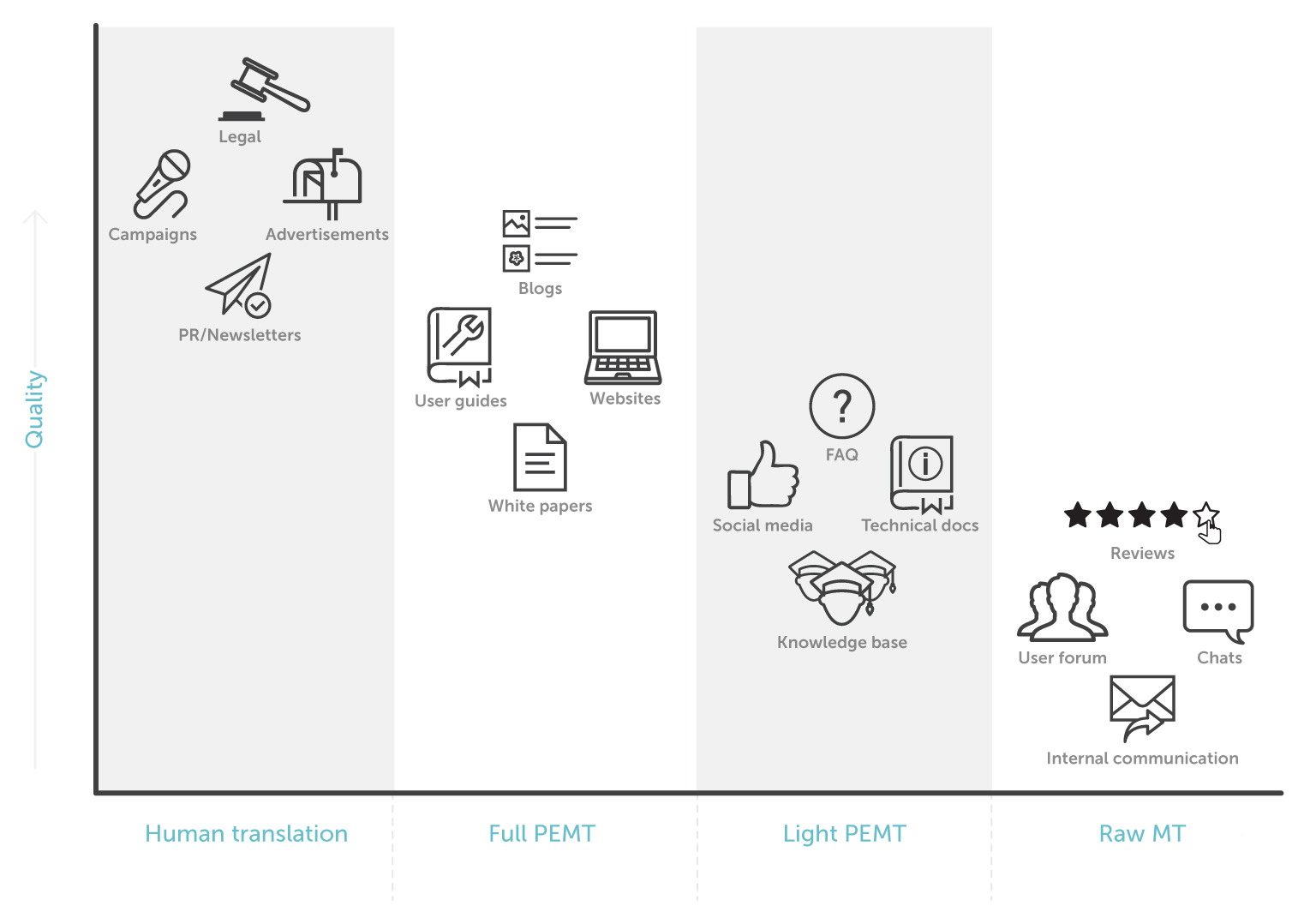
Author: Jesper Lehrmann
Product Director, LanguageWire
LinkedIn

Author: Jesper Lehrmann
Product Director, LanguageWire
LinkedIn

Using Maching Translation.
Machine translation is one of the hot topics in the language services industry. It’s been on our minds for several years. Reading the news, it’s difficult not to stumble upon some story about advances in neural technology, or how machine translation is going to change the industry as we know it. But when it comes down to it, what exactly is machine translation?
Simply put, machine translation relies on software, instead of a person, to translate text from one language into another. While machine translation is excellent for translating word-for-word, it can often miss the mark when translating sentences and paragraphs. A human is needed to fully grasp the context of the words and produce the best possible translation.
Even if human translation gives the best quality result, the growth of machine translation over the last several years suggests there are relevant uses for this type of translation. According to Common Sense Advisory, 12.7 percent of all language technology revenue in 2017 came from machine translation, behind only translation management systems and interpreting management systems. So, if the quality of the translation output is lower, when does it make sense to use machine translation?
Deciding when to use machine translation all depends on your workflow. Let’s walk through some different examples and see what workflows will produce the best result.

An overview of content best suited to different machine translation workflows
When people typically think of machine translation, free online engines come to mind, like Google Translate. We have already discussed why we don’t think this type of translation is suitable in the workplace. Security concerns and the lack of control over your content far outweigh the cost savings.
If you’re looking for a quick result, which a free engine offers, but want control over the security of it, machine translation from a Language Solution Provider (LSP) is a good option. In a workflow with only machine translation, you enter your text and the engine spits out the translated version instantly for you to use. The text isn’t edited by a human translator, which means that the translation quality is often poor.
You can improve the quality of the translation over time by investing in a trained engine. There is still no human involved, but the engine will “learn” over time and won’t make the same mistakes again and again. Trained engine or not, machine translation will always result in a lower quality translation, compared to what humans can produce. The upside is that machine translation is much cheaper than human translation, so you can translate more content without increasing costs.
A lower quality result shouldn’t completely put you off machine translation, though. It can be a great internal tool. One LanguageWire customer uses machine translation to quickly translate text so their global offices can get the gist of incoming customer bid proposals. Machine translation is also useful for website prototyping. We all know that translating into some languages results in longer text than others and with machine translation you can quickly and cheaply test out a new web design in multiple languages.
If you like the speed and low cost of machine translation, but want a higher quality translation, a workflow combining machine translation and editing is a way to get the best of both worlds. Many LSPs allow you to add machine translation to your translation workflow so a human translator edits the machine translation output to improve the readability. The editor corrects lexical errors, syntax errors and the most obvious errors, such as mistranslations and terminology mistakes. The result is still a lower quality translation than a full human translation, but it is much more readable than raw machine translation.
The budgets of most organisations don’t stretch to allow translation of all content. Often, documents that don’t directly influence sales, like support documents, are not prioritised. However, customer service is a main competitive differentiator, so it can benefit companies to have some support content translated for local markets. Most support documents are straightforward texts without creative prose, making them ideal for a workflow of machine translation and editing. Companies can ensure support documentation is understood by their international customers for a fraction of the cost of human translation.
To achieve a machine-translated text that is of comparable quality to human translation, a more thorough review of the text is needed. A workflow that includes machine translation, editing and proofreading means two human translators look at the raw text. The first translator edits the text and then a second translator proofreads the text for grammar, spelling and overall translation quality. While a text translated using this workflow will not be the same as one translated by a person, the quality level should be the same.
What this means is that a workflow with machine translation, editing and proofreading is ideal when every single word choice isn’t important. For example, blogs, white papers or user guides. For these content types, the most important thing is that the reader completely understands the content. Content that strives to evoke emotions in the reader, such as a marketing campaign, or needs an exact specialised word-for-word translation, such as legal documents, are best served with human translation.
Free white paper: Optimise Content Workflows with Machine Translation.
Are you struggling to create more content, in more languages, in less time, and at a lower cost? Read this handy guide on how to streamline your content workflows with make use Neural Machine Translation.
Considering that most machine translation workflows that include editing and proofreading are similarly priced and have the same turnaround time as human translation, why use machine translation? It comes down to resources.
You probably have a preferred team of translators who know your brand inside and out. You need to make sure they have enough time to focus on your most important documents. The rest of your content can be translated using machine translation. If you incorporate machine translation into your translation strategy, you will be able to translate more types of content without increasing your budget. At the same time, you can be sure that your expert translators in your brand are always available when you need them most.
How can we help you?
Your journey to a powerful, seamless language management experience starts here! Tell us about your needs and we will tailor the perfect solution to your enterprise.